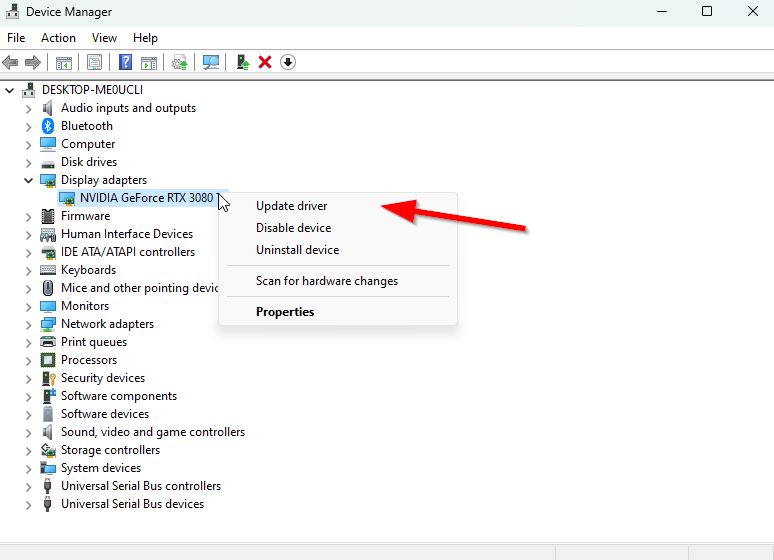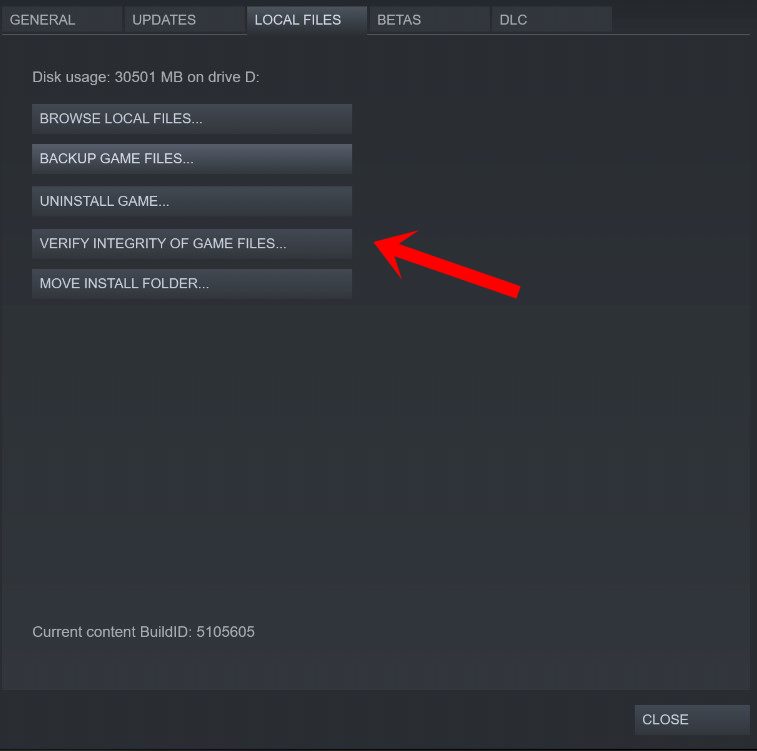Sea of Thieves is one of the open-world multiplayer adventure video games that focused on pirates where players can experience it by sailing the ship, fighting, exploring, and looting everything that is needed to live. The title has received so many positive reviews since 2020 for the PC version. Meanwhile, newcomers and interested players are looking for Sea of Thieves Best Graphics Settings for 3050, 3060, 3070, 3080, 3090, 1060, 1070, 2060, 2080, and More.
Now, if you’re also a Sea of Thieves player for the PC version and want to achieve a much smoother gaming experience without losing drastic visual quality then you can follow this guide completely. Plenty of low-end PC and even mid-budget PC users don’t get enough framerate counts with the standard Full-HD 1080p resolution quality. It mostly happens whenever players don’t tweak in-game graphics settings properly. So, the game becomes laggy a lot.
Most Intel CPU users prefer to use an external graphics card and we all know how Nvidia graphics cards are capable to perform in delivering graphics processing. So, entry-level and mid-budget CPU users want a higher framerate count than 60 FPS but it requires considering slightly lower graphics quality. To get a smoother gaming experience without losing major visual quality on the PC then you should go through this article completely.
Also Read
Fix: Sea of Thieves Xbox Login / Sign In Not Working
Modern Warfare 2 Best Graphics Settings for 3070, 3080, 3090, 1060, 1070, 2060, 2080, and More
Fix: Sea of Thieves Keep Crashing on Steam Deck
All Rewards in Sea of Thieves: The Secret Wilds Adventure
Best Bottleneck Calculators for PCs in 2023
Sea of Thieves 2: Release Date and Rumors
What is VSync? Should You Turn it On or Off?
Fix: Sea of Thieves Not Receiving Gold 2023
10 Best Ship Skin Sets for Sea of Thieves
Will GPU Prices Drop in 2023 or 2024?

Page Contents
- Sea of Thieves Best Graphics Settings for 3050, 3060, 3070, 3080, 3090, 1060, 1070, 2060, 2080, and More
- 1. Check System Requirements
- 2. Get a Minimum of 60 FPS with Optimal Graphics Settings
- 3. Disable Mouse Acceleration on Windows
- 4. Adjustments for Nvidia Control Panel
- 5. Update Graphics Drivers
- 6. Switch to Dedicated GPU
- 7. Verify and Repair Game Files
- 8. Try Disabling Overlay Apps
- 9. Update Sea of Thieves
Sea of Thieves Best Graphics Settings for 3050, 3060, 3070, 3080, 3090, 1060, 1070, 2060, 2080, and More
There are several possible reasons apart from the in-game graphics settings that can reduce the framerate count such as CPU/GPU bottleneck, insufficient RAM, outdated graphics card or incompatible DirectX features with the graphics card, outdated game version, corrupted or missing game files, etc. If you’re using a low-end or entry-level budget PC with the entry-level Nvidia GPU (GeForce GT or GTX series) then you may get up to 60 FPS on average.
But obviously, you’ll have to adjust the in-game graphics settings and sacrifice a few visual details. While if you’re using a mid-budget PC build with the Nvidia RTX 20 or high-end 30 series GPU then you should get more than 100 FPS without doing that much. Still, we’ve provided with you the best possible graphics settings for all that can eventually deliver improved FPS count in all scenarios. So, without further ado, let’s get into the workarounds below.
1. Check System Requirements
Before jumping into any other workarounds or settings adjustments, you should ensure that your PC specification is compatible enough or not. We’ve mentioned the system requirements below that you can check out.
Minimum:
- OS: Windows 7/Vista/XP
- Processor: Intel Core 2 Duo E6600 or AMD Phenom X3 8750 processor or better
- Memory: 2 GB RAM
- Graphics: Video card must be 256 MB or more and should be DirectX 9-compatible with support for Pixel Shader 3.0
- DirectX: Version 9.0c
- Storage: 15 GB of available space
Recommended:
- OS: Windows 10
- Processor: Intel i5 4690 @ 3.5GHz or AMD FX-8150 @ 3.6 GHz
- Memory: 8 GB RAM
- Graphics: Nvidia GeForce GTX 770 or AMD Radeon R9 380x
- DirectX: Version 11
- Storage: 50 GB of available space
Extreme:
- OS: Windows 10 (1607 Anniversary update)
- Processor: Intel Core i7-4790 / AMD Ryzen 5 1600
- Memory: 16 GB RAM
- Graphics: Nvidia GeForce GTX 1080 Ti / AMD Radeon RX Vega 64
- DirectX: Version 11
- VRAM: 8 GB
- Storage: 60 GB of available space
2. Get a Minimum of 60 FPS with Optimal Graphics Settings
If you’re using an outdated or low-end PC configuration then tweaking the graphics settings in the Sea of Thieves game might help you to achieve increased FPS count.
- Default Quality Selection – Custom
- Shadow Detail – Rare or Mythical
- Model Detail – Rare or Mythical
- Texture Detail – Rare or Mythical
- Water Detail – Rare or Mythical
- Lighting Detail – Rare or Mythical
- Particle Effect Quality – Cursed
- Particle Resolution – Cursed
- Resolution Limit – 1920×1080 (85%-90% scaling)
- Display Mode – Fullscreen
- V-Sync – Off
- Framerate Lock – Off
- Performance Counters – Off
- Buffering – Double
- Resolution Scaling – 100
3. Disable Mouse Acceleration on Windows
To be precise, a mouse acceleration feature basically improves the motion or movement of the mouse cursor/pointer on the screen. So that you won’t feel any kind of lag or jitter while moving the mouse pointer on the screen here & there. By disabling the mouse acceleration option on the system, you’ll be able to reduce the motion blur or jitter of the mouse pointer movement while gaming which can also help in reducing in-game stutters. To do that:
- Click on the Windows logo on the taskbar.
- Type mouse settings in the Start menu search bar.
- Click on Change your mouse settings > Click on Additional mouse options.
- Now, select the Pointer Options tab.
- Make sure to Uncheck the Enhance Pointer Precision box.
- Click on Apply and then OK to save changes.
4. Adjustments for Nvidia Control Panel
You can head over to the Nvidia Control Panel application and try performing the following adjustments to ensure your game will run slightly better without screen tearing.
- V-Sync (Vertical Sync) – OFF
- Tripple buffering – ON
- Maximum pre-rendered frames – 1
5. Update Graphics Drivers
You should try checking for the graphics driver update on your Windows PC and installing the latest version to ensure no update is pending at your end. An outdated or missing graphics driver can trigger issues with properly functioning graphics-intensive programs. To do that:
- Right-click on the Start Menu to open up the Quick Access Menu.
- Click on Device Manager from the list to open the interface.
- Now, you’ll need to double-click on Display adapters to expand it.

- Then right-click on the dedicated graphics card name you’re using to bring the context menu.
- Next, click on Update driver > Choose Search automatically for drivers.
- The system will automatically check for the available update.
- If an update is available, it’ll automatically download and install the latest version.
- Once done, make sure to restart your PC to apply the changes.
If you can’t find any pending updates then just head over to the official website of the Nvidia website below and search manually for the latest update. If a new version is available for the graphics card, just download the driver and install it on your PC. You can jump to the link below to do so:
6. Switch to Dedicated GPU
Sometimes the game may run with the integrated HD graphics on the PC that comes with the processors to handle minimal graphics tasks. But if you’re using an external Nvidia graphics card then make sure to switch the Sea of Thieves game to the dedicated GPU by following the steps below.
- Right-click on the desktop screen to open the context menu.
- Now, click on Nvidia Control Panel to open it.
- Head over to 3D Settings > Select Manage 3D Settings.
- Open the Program Settings tab > Choose Sea of Thieves from the drop-down menu.
- Next, select the preferred graphics processor for this program from another drop-down menu.
- Finally, your Nvidia GPU should show as High-Performance Nvidia Processor.
- Save the changes and reboot the PC.
7. Verify and Repair Game Files
The chances are high that somehow your game files are missing or corrupted on the PC which eventually conflicts with the game running properly. You may not receive errors or warning messages that’s why you won’t understand what’s going on. It’s better to perform repairing game files on the PC. To do so:
- Launch the Steam client > Click on Library.
- Right-click on Sea of Thieves from the list of installed games.
- Now, click on Properties > Go to Local Files.

- Click on Verify Integrity of Game Files.
- You’ll have to wait for the process until it gets completed.
- Once done, just restart your computer.
8. Try Disabling Overlay Apps
Sometimes a couple of applications may come with an additional overlay app that basically helps the streamers or gamers a lot. However, these overlay apps can eventually conflict with the game files to run smoothly and may cause several issues like FPS drops, black screen issues, lags, glitches, etc. You should try disabling the overlay apps manually before launching the game again to cross-check if the game is running with higher FPS or not. To do so:
Disable Discord Overlay:
- Launch the Discord app > Click on the gear icon at the bottom.
- Select Overlay under App Settings > Turn on the Enable in-game overlay.
- Click on the Games tab > Select Sea of Thieves.
- Finally, Turn Off the Enable in-game overlay toggle.
- Make sure to reboot your PC to apply changes.
Disable Xbox Game Bar:
- Press the Windows + I keys to open Windows Settings.
- Click on Gaming > Go to Game Bar > Turn off Record game clips, screenshots, and broadcast using the Game bar option.
Disable Nvidia GeForce Experience Overlay:
- Launch the Nvidia GeForce Experience app > Head over to Settings.
- Click on the General tab > Disable the In-Game Overlay option.
- Finally, restart the PC to apply changes, and launch the game again.
Disable Steam Overlay:
- Open the Steam client on the PC > Click on Library.
- Right-click on Sea of Thieves from the left pane > Select Properties.
- Now, click on General > Turn OFF the ‘Enable the Steam Overlay while in-game’ option.
There are some other overlay apps that can cause trouble for you something as MSI Afterburner, Rivatuner, RGB software, etc. You should turn them off as well.
Also Read
9. Update Sea of Thieves
Mostly an outdated game patch version may trigger multiple potential issues with the game running as well as smoother gameplay. You should install the latest update to make the game compatible with fewer bugs whatsoever. To do that:
- Open the Steam client > Go to Library.
- Click on Sea of Thieves from the list of installed games on the left pane.
- Now, the client will automatically search for the available update.
- If there is an update available, you’ll see the Update option.
- Just click on it and wait for a couple of minutes until the game update completes. [Depends on the storage space and internet connectivity]
- Once done, make sure to close the Steam client.
- Finally, reboot your PC to apply changes
Bonus: If you don’t want to mess with the in-game graphics settings, you can open the Nvidia GeForce Experience app. Then click on Optimize to get the optimized Sea of Thieves Settings immediately without manually adjusting graphics options.
That’s it, guys. We assume this guide was helpful to you. For further queries, you can comment below.
